JAZZDOR BERLIN 2025

The 2025 edition of the Berlin satellite-edition of Strasbourg’s JAZZDOR had two striking features: it was a feast of strings and it was the adieu of retiring long-term director Philippe Ochem, a key-figure in the French jazz field.

Äether
Philippe Ochem has been on the helm of Jazzdor for 36 years with convincing authority having developed and spread Jazzdor with satellites throughout Europe: Offenburg, Berlin, Dresden (Germany) and Budapest (Hungary). He is such a unique figure in how he curated what he created that this jazz chapter has definitely come to an end now. There is no second festival in Europe (and outside too) that works in that way year after year with carefully curated original line-ups of multi-national groups: French-German, French-Swiss, French-US-American, French-Dutch, French-Belgian, French-Polish. Philippe Ochem’s successor will be Vincent Bessières, who will make a fresh start re-filling Ochem’s footsteps by giving the festival new colourings and his own stamp in the coming years. It is open to surprise (for a glimpse see the interview here).


Philippe Ochem & Vincent Bessières
The festival included 4 evenings through the week with a total of 10 concerts:
1. The Time Machine - Sleeping Animals
2. Grégory Dargent Soleil D’Hiver - Orchestre National de Jazz With Carla
3. Soirée Franco-Polonaise
Dominik Wanja/Christophe Monniot
Äether (Amalia Umeda/Alekasandra Kryńska/Maëlle Desbrosses/Adèle Viret)
Léa Ciechelski/Tomasz Dąbrowski/Kamila Drabek/Samuel Ber
4. Eggs, Stairs & Shells - Hélène Labarrière Puzzle - The Ocean Within Us
For me this edition was an amazing feast of strings in fascinating and forceful diversity. In the totality of 9 concerts, strings played a crucial role, in the variety of string instruments as well in their combination with other instruments: baroque guitar, theorbo, gamba, oud, viola (2x), violin (2x), cello (2x), double bass (3x) and electric guitar. The double bass had a leading role in 3 ensembles: Sarah Murcia’s Sleeping Animals, Héléne Labarrière’s Puzzle and Pascal Niggenkemper’s The Ocean Within Us (I didn’t count the appearance of string instruments in the big Klangkörper of the Orchestre National de Jazz).
With Sleeping Animals through microtonal furrows on poly-rhythmical waves (premiere)



Mat Maneri, Bruno Ducret & Sarah Murcia
Sleeping Animals is a newly formed unit by bassist Sarah Murcia in the unusual combination of three string instruments with drums. With drums? Yes, full force drums! Together with Murcia’s double bass there were Mat Maneri on viola and Bruno Ducret on cello navigating with high unifying dynamics in/on Christophe Lavergne’s permanently astonishingly flowing poly-rhythmical waves.


Mat Maneri, Bruno Ducret, Sarah Murcia & Christophe Lavergne
Beyond (my) expectation strings and drums, drums and strings went in corresponding dynamics through manifold microtonal furrows, nuances and subtleties. The flow, ingenuity and mutual stimulation of the four musician together was stunning, catching and truly unique. It could have continued without losing excitement. Lavergne and Murcia were formerly both connected to the group of Louis Sclavis and the septet of Sylvain Cathalda. Murcia and Maneri have been playing together in recent past and young Bruno Ducret as a new partner in crime visibly enjoyed his first collaboration with master Maneri. It is a strong unit, capable of unusual things. They will be touring Europe in the fall, take your chance!
Äetherian seduction, a miracle of son nuancé et dynamism incroyable


Amalia Umeda & Aleksandra Kryńska - Maëlle Desbrosses & Adèle Viret
The string-echo of Sleeping Animals was still resonating when followed up two evenings later by a brilliant ad hoc string quartet. It was made up of four female string players from France, Belgium and Poland figuring under the moniker Äether. Amalia Umeda (violin), Aleksandra Kryńska (violin), Maëlle Desbrosses (viola) and Adèle Viret (cello) hit the stage with their vigorous, passionate and exciting music making on a truly unbelievable high performance level. In intense togetherness, they embarked on fascinating dynamic interactions with amazing nuances, dove in challenging and bold gliding as well as subtle transitions which left the audience stunned. The air was filled with vibrating lines and our heads were buzzing of hums and whizzes.

Äether
It is more than worthwhile to dive into the working contexts of each of these four ace musicians. This was a product of French-Polish cooperation manifested in the Soirée Franco-Polonaise on Thursday night (see below). As a programmer I would have hired them as a quartet on the spot (see below more info about their background).
The string line ran through until the last evening where the contrabasses of Helène Labarriére and Pascal Niggenkemper played a major role.
Last night: two double basses in central rol making ears run, jump, dive, somersault, hop, drop and stop

Hélène Labarrière
Helène Labarriére (1963), a name that is deeply integrated in the French jazz scene as a respected broadly operating bassist through the last four decennia should be well known. The last night offered a great opportunity of listening to her music fully attentive and thereby experiencing the power of her playing and ensemble leading. She left no doubt about her dynamism from the first second in the way she draw her lines with highest energy and pulled her four fellow musicians in. They played music from her recent album “Puzzle”, released on the Jazzdor label. The album contains five homages of legendary female political activists: Angela Davis (1944), Emma Goldman (1869-1940), Louise Michel (1830-1905), Thérèse Clerc (1927-2016). On first place however stands an homage of the most famous French cancan dancer of the Moulin Rouge, Jeanne Louise Beaudron aka Jane Avril (1868-1943). These lives contained a rich variety of vital struggle and outside drama as inspiration for the vital music.
Niggenkemper then took us more to the roar of the inside.
Swirling wild sea spray: dancing through it, dancing in its roaring inside

Roaring sea? When such forces are addressed and incorporated into the performance, the double bass is not far away. In the case of The Ocean Within Us it were the unusual bass manoeuvres of Jazzdor’s Artist in Residence Pascal Niggenkemper we were faced with in a pronounced, expressive dramaturgy. Niggenkemper regularly equips his bass and its strings with sound funnels that distort the sound and add percussive elements. He also uses the sound of small motors, derived from his solo-project “La vallée de l’étrange”. The performance as a whole had a scenic nature with Gerald Cleaver’s speaking voice in the narrator’s role. The scenario was sparked and enlivened by the music making on different layers. The instruments c.q. the musicians were not only playing their music together. The instruments acted in certain roles of the overall scenario of sounds.

Gerald Cleaver
The clarity of our thoughts, feelings and images emerges from a constantly surging and flowing ocean of sensory impressions and approaches to make it accessible to our perception. Both states of matter influence each other and depend on each other. Niggenkemper gave this ‘permanent swirling something’ shape and expression through his music and the visuals. Contours stood out strongly and then blurred again or sank and disappeared in the middle of a space with whispering ghost voices and remote ‘Babylon choirs’.


Sakina Abdou
Niggenkemper’s work with sound funnels on his bass helped to make the performance scenic where every instrument and its player finds its specific place and role (a bit comparable to Stockhausen’s adagio in his opera-cycle “Licht”): Gerald Cleaver with his (engaging) speaking voice and pointed and sounding drumming, Sakina Abdou with her expressive ‘saxophonian’ bursts, deeper digging sonorities, and essential percussion, and Liz Kosack, the masked member, with her omnipresent, roaming-dancing keyboard/keytar beeps, buzzes, and pearly garlands.
Aside
This was not only the usual open improvisation thing of ‘order is not a given thing but emerges from de- and re-construction in real-time’. It went further by framing it with an imaginal scenic cliffhanger that invites the listener to become a mental-emotional co-player in a space, a field of figurative action.


Pascal Niggenkemper
What Pascal Niggenkemper presented, had an extended quality, which is not so often seen. He obviously has a slope after it, a penchant for it and the necessary talent for its realisation. It is also clearly recognisable in the work he did for his Jazzdor residency in Ortenau (Alsace) and in the SWR New Jazz Meeting in Baden-Baden/Karlsruhe last fall. In Ortenau he worked with school children in the creation of a scenery “A Bord de l’Arkestra” with field recordings. In November 2024 he presented his Tuvalu-project in the famous, now venerable New Jazz Meeting in the Karlsruhe venue Tollhaus.
He worked there with two identical multinational groups in the scenic setting of a geographical-cultural journey (Elisabeth Coudoux (cello), Ben La Mar Gay (trumpet, bells), Louis Lorain (trumpet), Mona Matbou Riahi (clarinet), Tizia Zimmermann, Artemis Vavatsika (accordeon), James Privat (spoken word)). The music did not function as backgrounding and underscoring element but was always an actor herself dealing with physical and fictional circumstances.
The New Jazz Meeting was founded 1966 as Free Jazz Meeting by the well-known Joachim-Ernst Berendt (on the history and the line-ups).
Back to (European) roots
Renaissance and Baroque music have for long had a permanent place in the French jazz scene (and the Italian scene too!). Well-known examples are tubaïst Michel Godard and guitarist David Chevalier, both in their specific manner. While Godard discovered and re-worked composers like Monteverdi and others, David Chevalier also went into the other direction by playing for example Björk on baroque instruments. The first who did something like that were the Finnish musicians of Ambrosius Ensemble playing music of Frank Zappa end of the 90s.


Atsushi Sakaï & Rose Dehors
The premiering project Time Machine, consisting of David Chevalier (theorbo, baroque guitar), Rose Dehors (Sackbut, Renaissance trombone), Etienne Manchon (harpsichord), Atsushi Sakai (gamba), goes a step further: it is music shaped after the chapters of H.G. Wells’ book Time Machine (1895). When the listener doesn’t know the book, (s)he has no clue and has to make up an independent reception/imagination of the music. For me in the beginning the music sounded strange and not very consistent. However it changed gradually, gained consistency, density and attraction - due to habituation, unfolding or changes in the music was difficult to decide - and finally resulted in brilliance of convincing ‘new’ sounds. It happened amongst others by turning the shortcomings of the old instruments into something positive, which was clearly experienceable in the case of the renaissance trombone played by Rose Dehors.
Soleil D’Hiver

Grégory Dargent
Soleil D’Hiver by Grégory Dargent was something about the Arabic Oud, the instrument introduced in Europe (Al Andalus) by Ziryab in the ninth century. I discovered the oud end of the 80s via my friendship to Lebanese musician Rabih Abou-Khalil and succumbed to an enduring fascination. I remember that i made a collection of oud players all over the world. There were few regions I found none, for example Alaska.
In those days however I did not find much understanding or enthusiasm for the sounds connected with the oud in my own environment, especially for the tricky groundbreaking idiom about-Khalil had developed, where traditional and non-traditional elements got entangled. My own environment (in The Netherlands) was not ready for it in that time. Oud, what’s that?
I immersed myself into music by/with Rabih Abou-Khalil, Georges Kazazian, Art Dinkjian, Roman Bunka, Haig Yazdjian, Naseer Shamma, Simon Shaheen, Anouar Brahem and Gordon Grdina from Vancouver (for whom I organized his first Europe tour). There was (and still is) much to discover. The oud and its sounds had travelled a lot* but not so much in central parts of Europe.
*Talking about the traveling of music, it’s interesting/surprising what Frank Zappa is telling about the beginnings of the music of the Mothers of Invention:
“I think my playing is probably more derived from the folk music records that I heard – Middle Eastern music, Indian music, stuff like that. “For years I had something called Music On The Desert Road [Deben Bhattacharya], which was a recording of all kinds of different ethnic musics from different places in the Middle East. I used to listen to that all the time – I liked that kind of melodic feel. I listened to Indian music, Ravi Shankar and so forth, before we did the Freak Out! album. The idea of creating melody from scratch based on an ostinato or single chord that doesn’t change, that was the world that I felt most comfortable with.”
(Guitar World Interview 1993)
The solo-program “Soleil D’Hiver” was Grégory Dargent’s individual story/journey with the oud as the ‘instrument of the east’ reaching into the western world. When he, as a guitarist, started to play oud, his father used to remark that he did it to annoy him, which was a bit odd and understandable at the same time. His father had grown up in Algeria and was forced to leave the country in the decolonisation period which he felt as disruption and expulsion from ‘home’ ground. Grégory Dargent grew up within a mixture of denial/repression of that past with many elements of everyday life from that past (a.o. food and specific vocabulary) that were not specifically marked. When Dargent jr. started to play oud, he ‘traveled back’, mentally but also physically and as filmmaker he collected footage from that travels on the lute-route through Marocco, Egypt, Lebanon, Iraq and Greece.
He created a moving/fluttering coarse grid print together with a music collage of oud sounds and electronics, which he performed live. With its fitting title it conveyed a specific, non-smooth, non-hip image of cultural transmission processes.
French-Polish Axis (more than Chopin/Szopen)
Poland without doubt is - and was in the past - one of the strongest jazz homes and traditions in Europe. It had the first mass jazz festival in 1956 in Sopot, which then gathered 50,000 spectators (it was a political gathering too). It played an important role in international jazz and bore important jazz musicians. During Soviet times Poland was the main bridgehead of jazz in Eastern Europe.

Karolina Juzwa & Philippe Ochem
A complete night program was dedicated to French-Polish cooperation as part of the international cultural program organized by the Adam Mickiewicz Culture Institute on the occasion of this year’s Polish Presidency of the Council of European Union. Three especially by Philippe Ochem and Karolina Juzwa (of International Jazz Platform INTL in Lodz) gathered combinations of musicians were given the opportunity to work with each other in Berlin in a three-days-residency. One of these three, the string quartet Äether, has already been reviewed above, the other two will follow here.

Dominik Wania & Christophe Monniot
Great Polish pianist Dominik Wania of famous Polish Maciej Obara Quartet played in duet with outstanding saxophonist Christophe Monniot which turned out into a masterly crafted and with grand souplesse performed, well dosed musical enjoyment. After the centre piece of the string quartet Äether, the unit of Léa Ciechelski, Tomasz Dąbrowski, Kamila Drabek and Samuel Ber, CDDB, made its appearance. CDDB played with wit and grit, strict and loose in the sense of Ornette.

Léa Ciechelski & Tomasz Dabrowski
Saxophonist/flutist Léa Ciechelski as part of Jazz Migration laureate group Prospectus already made a splash at Jazzdor 2024 (see my review HERE). She is a broad positioned and profiled musician in the French scene. She also is a member of Sylvaine Hélary’s Orchestre National de Jazz. Dabrowski is one of the leading younger trumpeters of the Copenhagen jazz scene and Kamila Drabek from Warsaw is a.o. the bassist of upcoming Polish all-female group O.N.E with pianist Kateryna Ziabliuk, saxophonist Monia Muc and drummer Patrycja Wybrańczyk. CDDB’s playing brought the high potentials of uniting forces across scene limits into live practice. CDDB without doubt is a configuration needing broader introduction into the Central European and Southern European context.
Grand Format: ONJ
And, there is a new tenure of the Orchestra National de Jazz (ONJ), this 17-piece grand format ensemble, the flagship of French jazz, now first time under a female direction, flutist Sylvaine Hélary. Hélary has a hand for larger ensemble work. She has created attractive works of a very own signature (see my review HERE).

ONJ
ONJ is an undertaking with a lot of possibilities but also challenges and risks. It can be a big laboratory, a gorgeous rich playground, a highly dynamic machinery, a multi-level sound universe etc.. The last installation of ONJ chose the big laboratory possibility for its final concert at last year’s jazzdor Berlin edition (see my review HERE). From the perspective of possibilities and daring, every new ONJ undertaking is exciting.
Hélary chose Carla Bley as the subject of her inaugural program—a project that offered a strong promise to become rewarding for musicians and audiences alike. The sound of Bley's original music is however so deeply embedded in our memories that it can also be difficult to reach its heights/depths—both in terms of the overall sound and the signature style of her striking soloists. To hit it right and nail it, Hélary joined forces with saxophonist Rémi Sciuto, an orchestra member, for making up the arrangements.
Hélary ensured the full sound of this large ensemble and sound body, including the strings. The for Carla Bley characteristic mixture of cheekiness, sweetness, and rawness came less pronounced into play for the time being. It will be exciting to see how this will develop over the course of the next seven concerts until the end of this year. It will for sure become further enriched.
Clueless, high up
One remaining concert fell outside the lanes, the concert of Eggs, Stars&Shells comprising Bo Van Der Werf (bariton sax), Elias Stemeseder (piano), Felix Henkelhausen (double bass) and Samuel Ber (drums), four highly estimated musicians from Berlin, New York and Brussels: it had something of ‘the artists in the circus dome clueless’ and left the audience slightly confused. The something that did not work was not easy to deter-mine.

Samuel Ber
Some Ochemiadics, curating practice
I learned almost all about French musicians and the French scene through visiting and attending the Jazzdor garden through the years. Almost, and the rest I learned via the Jazz Migration meetings in Paris club La Dynamo in the Pantin neighbourhood.
I learned about the music, the musicians, the personalities, the relationships in the scene and its dynamics. It was never a static thing. I could see musicians and groups in development and in their mutual relations. It led to interesting, exciting festival nights as such and as context for getting insights into the French scene.
Through Jazzdor’s binding to the Berlin neighbourhood Prenzlauer Berg around Eberswalder Strasze this insight was a lively affair with a Berlin kiez-feeling. Jazzdor was a unique experience space that took me imperceptibly along a developmental processes of musicians, younger ones as well as older ones. Jazzdor fulfilled an introductory function as well as a discovery function and a strong memory function. I could see musicians in different line-up or different projects and in different roles. In an earlier report I compared Jazzdor’s curatorial work with a special kind of gardening with changing/developing flower beds. It provided natural contextualising without showcase attitudes and effects. There was a good balance of repetition and variation, which constituted a good feeling of continuity and provided strong memory traces. Interaction and exchange with the musicians through the day made this process - especially in the beginning years - still more intense and valuable. It was something precious I could expand on.
Text en photography © Henning Bolte
Other
In case you LIKE us, please click here:
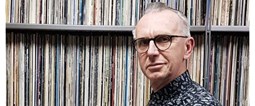
Foto © Leentje Arnouts
"WAGON JAZZ"
cycle d’interviews réalisées
par Georges Tonla Briquet

our partners:



Hotel-Brasserie
Markt 2 - 8820 TORHOUT

Silvère Mansis
(10.9.1944 - 22.4.2018)
foto © Dirck Brysse
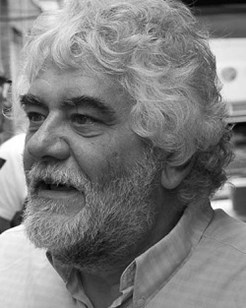
Rik Bevernage
(19.4.1954 - 6.3.2018)
foto © Stefe Jiroflée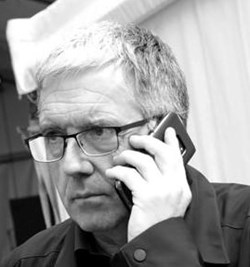
Philippe Schoonbrood
(24.5.1957-30.5.2020)
foto © Dominique Houcmant
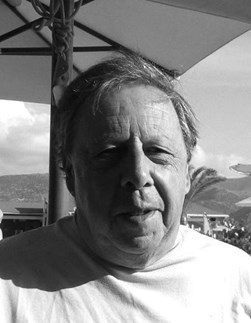
Claude Loxhay
(18.2.1947 – 2.11.2023)
foto © Marie Gilon
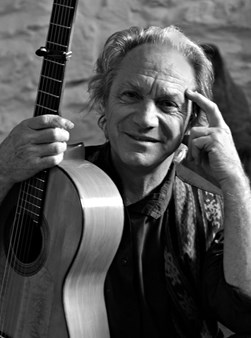
Pedro Soler
(8.6.1938 – 3.8.2024)
foto © Jacky Lepage
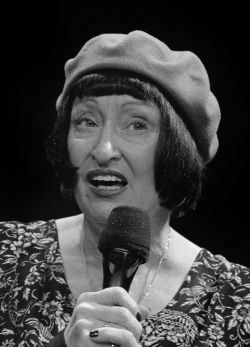
Sheila Jordan
(18.11.1928 – 11.8.2025)
foto © Jacky Lepage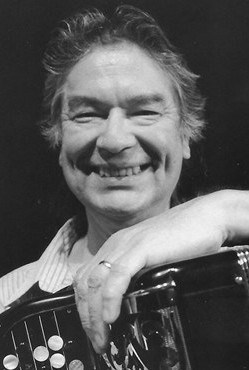
Raúl Barboza
(22.5.1938 - 27.8.2025)
foto © Jacky Lepage
Special thanks to our photographers:
Petra Beckers
Ron Beenen
Annie Boedt
Klaas Boelen
Henning Bolte
Serge Braem
Cedric Craps
Luca A. d'Agostino
Christian Deblanc
Philippe De Cleen
Paul De Cloedt
Cindy De Kuyper
Koen Deleu
Ferdinand Dupuis-Panther
Anne Fishburn
Federico Garcia
Jeroen Goddemaer
Robert Hansenne
Serge Heimlich
Dominique Houcmant
Stefe Jiroflée
Herman Klaassen
Philippe Klein
Jos L. Knaepen
Tom Leentjes
Hugo Lefèvre
Jacky Lepage
Olivier Lestoquoit
Eric Malfait
Simas Martinonis
Nina Contini Melis
Anne Panther
France Paquay
Francesca Patella
Quentin Perot
Jean-Jacques Pussiau
Arnold Reyngoudt
Jean Schoubs
Willy Schuyten
Frank Tafuri
Jean-Pierre Tillaert
Tom Vanbesien
Jef Vandebroek
Geert Vandepoele
Guy Van de Poel
Cees van de Ven
Donata van de Ven
Harry van Kesteren
Geert Vanoverschelde
Roger Vantilt
Patrick Van Vlerken
Marie-Anne Ver Eecke
Karine Vergauwen
Frank Verlinden
Jan Vernieuwe
Anders Vranken
Didier Wagner
and to our writers:
Mischa Andriessen
Robin Arends
Marleen Arnouts
Werner Barth
José Bedeur
Henning Bolte
Paul Braem
Erik Carrette
Danny De Bock
Denis Desassis
Pierre Dulieu
Ferdinand Dupuis-Panther
Federico Garcia
Paul Godderis
Stephen Godsall
Jean-Pierre Goffin
Claudy Jalet
Chris Joris
Bernard Lefèvre
Mathilde Löffler
Claude Loxhay
Ieva Pakalniškytė
Anne Panther
Etienne Payen
Quentin Perot
Jacques Prouvost
Jempi Samyn
Renato Sclaunich
Yves « JB » Tassin
Herman te Loo
Eric Therer
Georges Tonla Briquet
Henri Vandenberghe
Peter Van De Vijvere
Iwein Van Malderen
Jan Van Stichel
Olivier Verhelst



